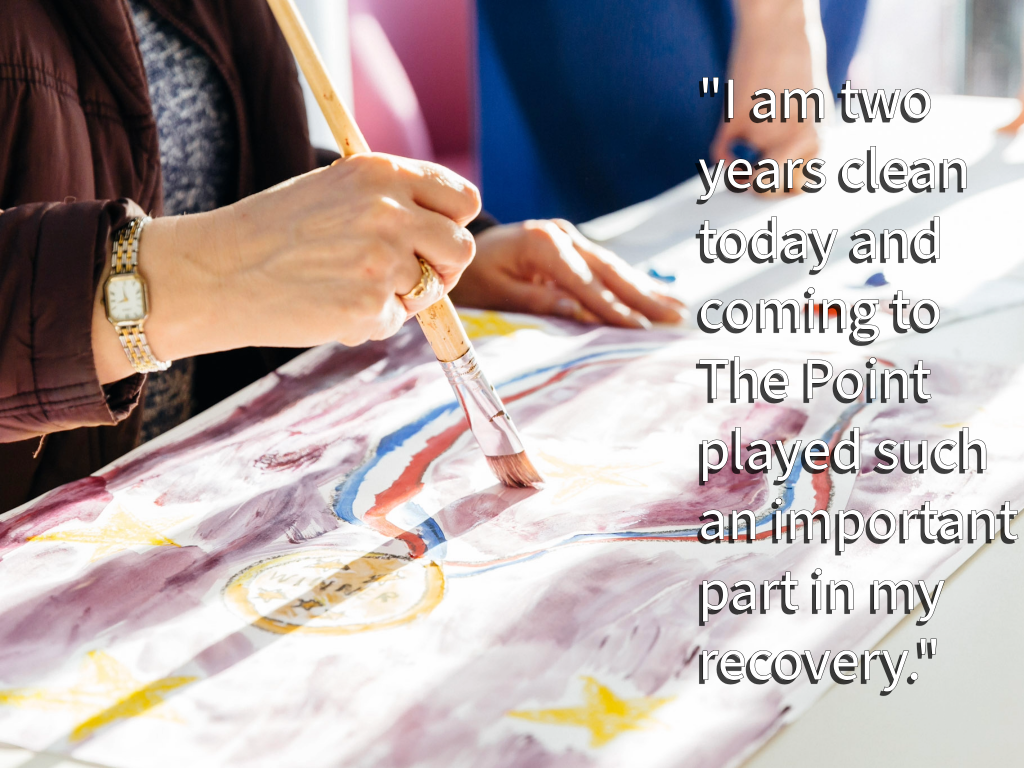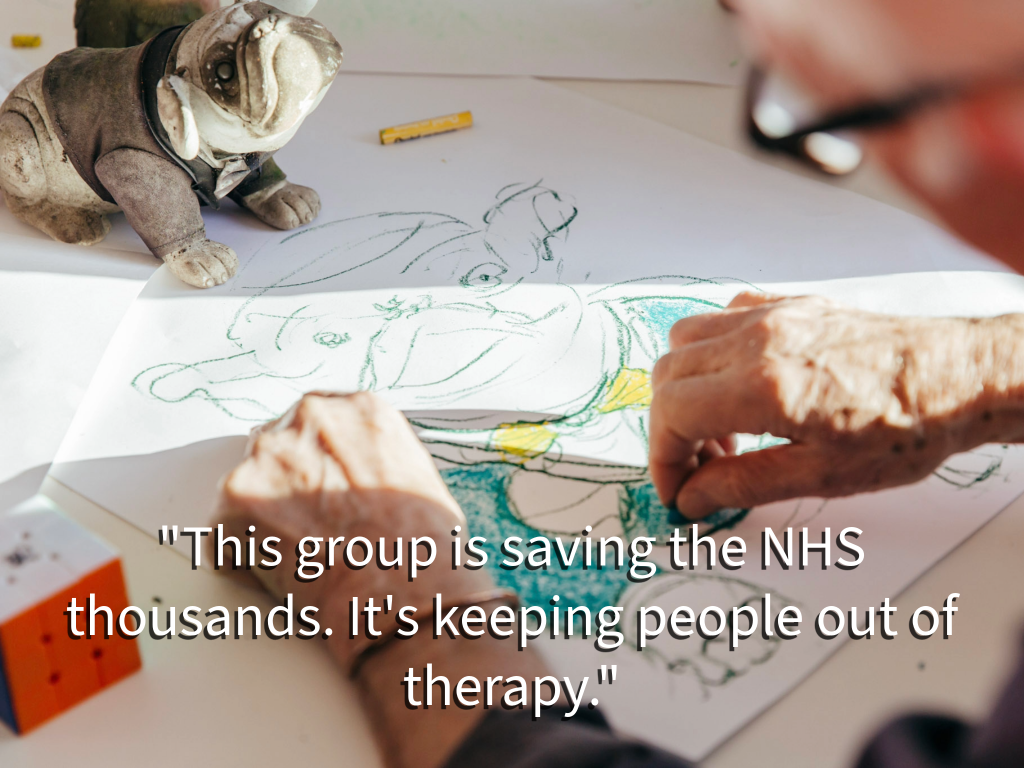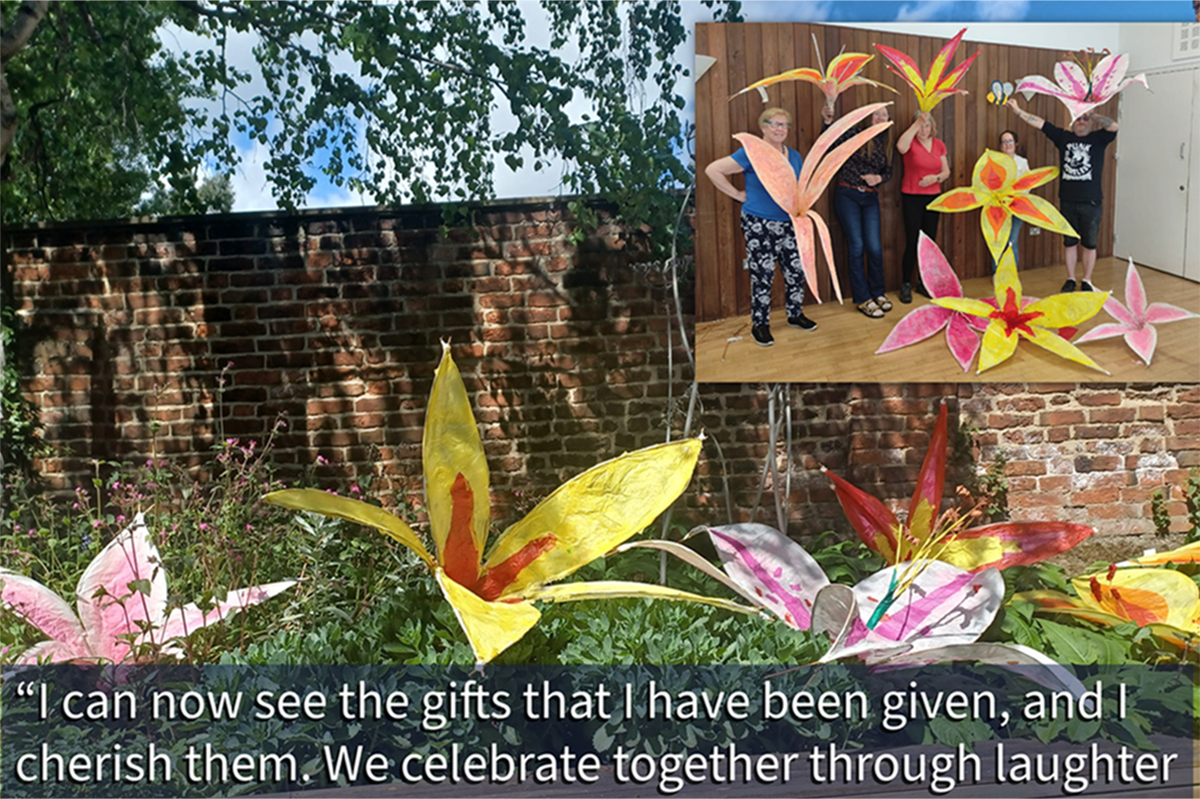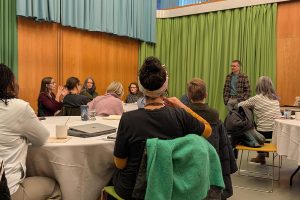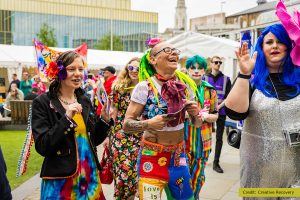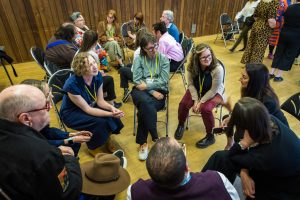
Clair Maleney, Embedded Researcher at Sheffield Hallam University, talks about how August marks the 10th anniversary of Creative Directions!
As an Embedded Researcher at darts, I’ve been attending Creative Directions for about a year now. I’ve played with paint and clay and wool and synthesizers. I’ve helped write songs, decorate barges, and bang on drums. I’ve had space to develop my own (questionable) illustration techniques, and gotten advice and critiques from enthusiastic supporters.
But mostly I just chat with participants. Hear about their days, their views, their disagreements. I ask what they think of the programme, what the think of the environment, just generally – what they think. I’ve learned a lot about what makes a group welcoming, and I’m looking whatever I’m going to be learning in the coming year!
In this blog I’ll try and briefly capture some of what I’ve learned about Creative Directions, it’s story, approach, and impact.
Origins
Creative Directions as it exists today grew from a small pilot programme and was initially called ‘A Good Day at The Point.’ The idea was based on the success of a number of previous projects, and in consultation with a group of participants who had participated in previous programmes at the Point or in the community.
And the first session ran on Wed, the 3rd of August 2015.
Approach
From the beginning Creative Directions has followed a few set principles, which have remained amazingly consistent over ten years.
Self-led and Artists-led sessions
Creative Directions has two formats. Self-led sessions offer participants a place to bring their own projects, or to use the materials set out to work on projects laid out by the facilitators.
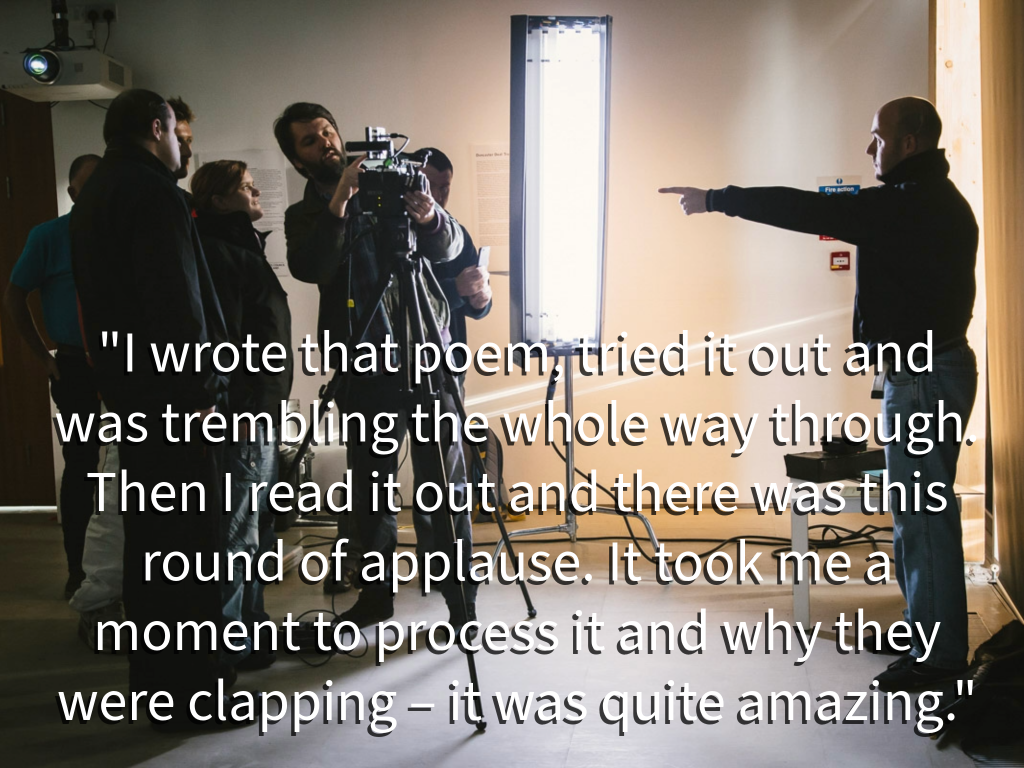
The second type of sessions are artist-led. An artist will oversee a block of sessions for 6-10 weeks. They might run a project for the entirely of that time, or build up a set of skills. There is a variety in the art forms that are on offer including music, visual arts, sculpture, and even film.
Being Your Creative Self
Creative Directions is a group aimed to support adults with any type of Mental Health concerns. Participants in Creative Directions are self-selected. They choose to come. There is no requirement to have or share any diagnoses, labels, or experiences. At Creative Directions it doesn’t matter where you’ve been before you walked through the door, you’re part of the group.
It offers an opportunity for people to connect with their creative selves. It also offers the opportunity to socialise, if people should choose to do so.
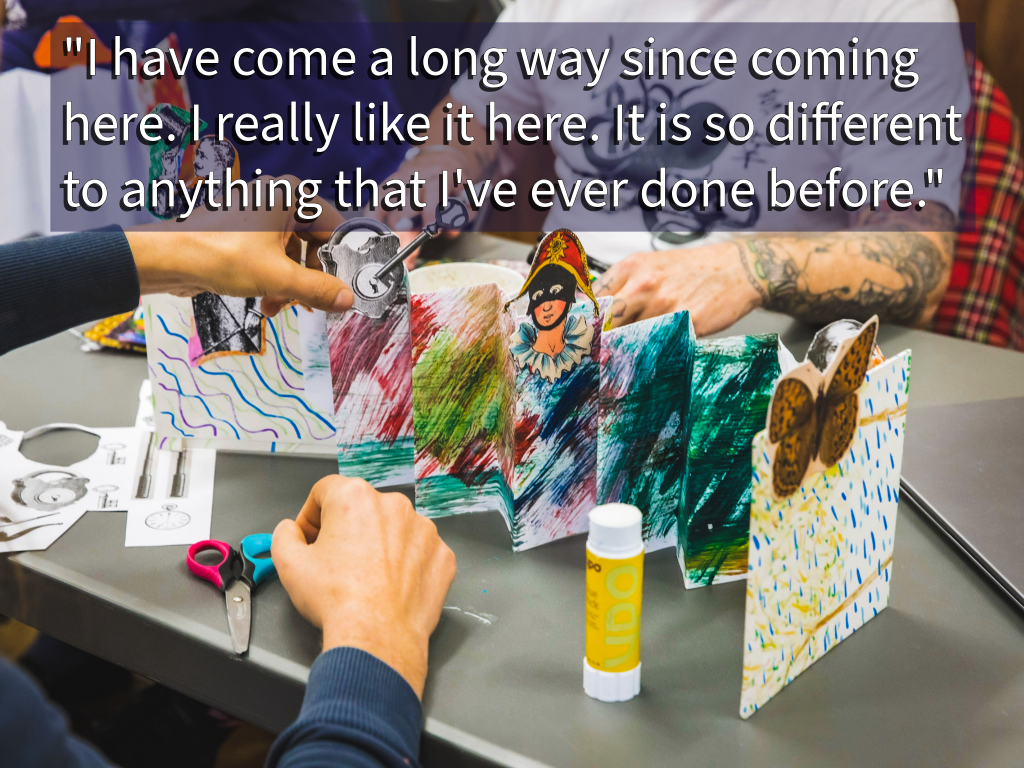
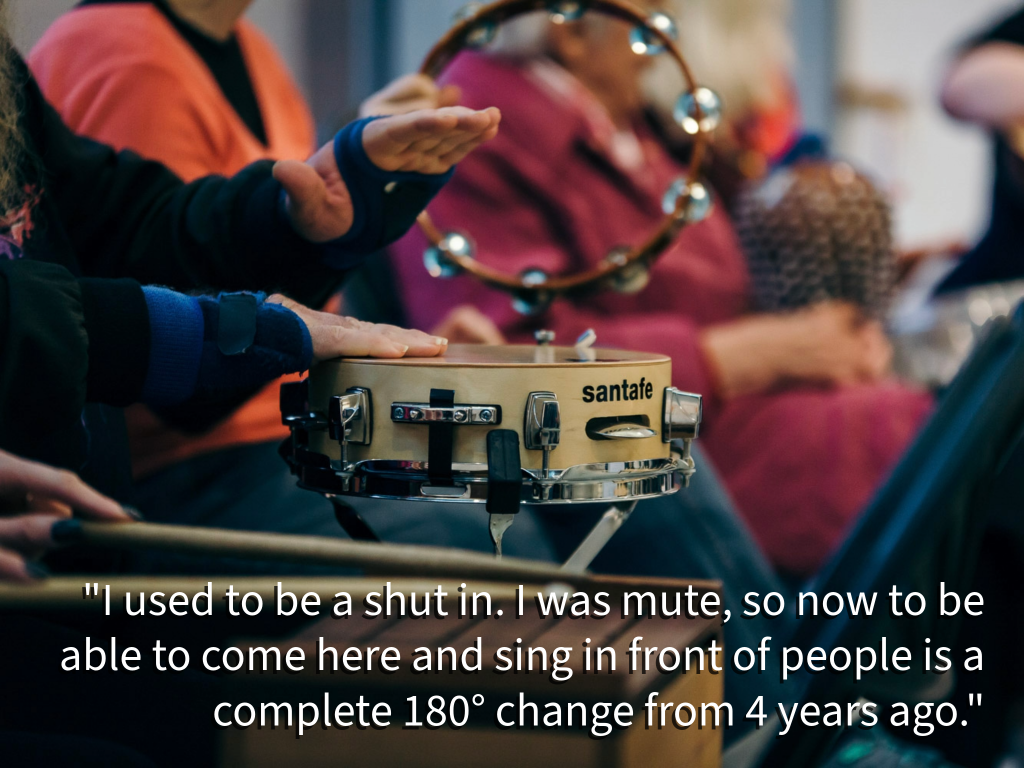
Flexible Attendance
There is no requirement for regular attendance in Creative Directions. Participants come and go as they see fit, and as fits with the rest of their lives.
Participant Coordinator and Peer Volunteers
Creative Directions is facilitated by a participant coordinator who attends every session and creates a welcoming and familiar environment to help participants to feel comfortable. The Participant Coordinator can also be assisted by a volunteer or peer volunteer, who helps with setting up the space, and chatting with participants.
Tea Breaks
Each Creative Direction session is free, and participants are given a voucher for a tea or other drink in the café at the Point, or in community settings there is a break for refreshments. Sitting around chatting over a cup of tea builds the bonds of the group.
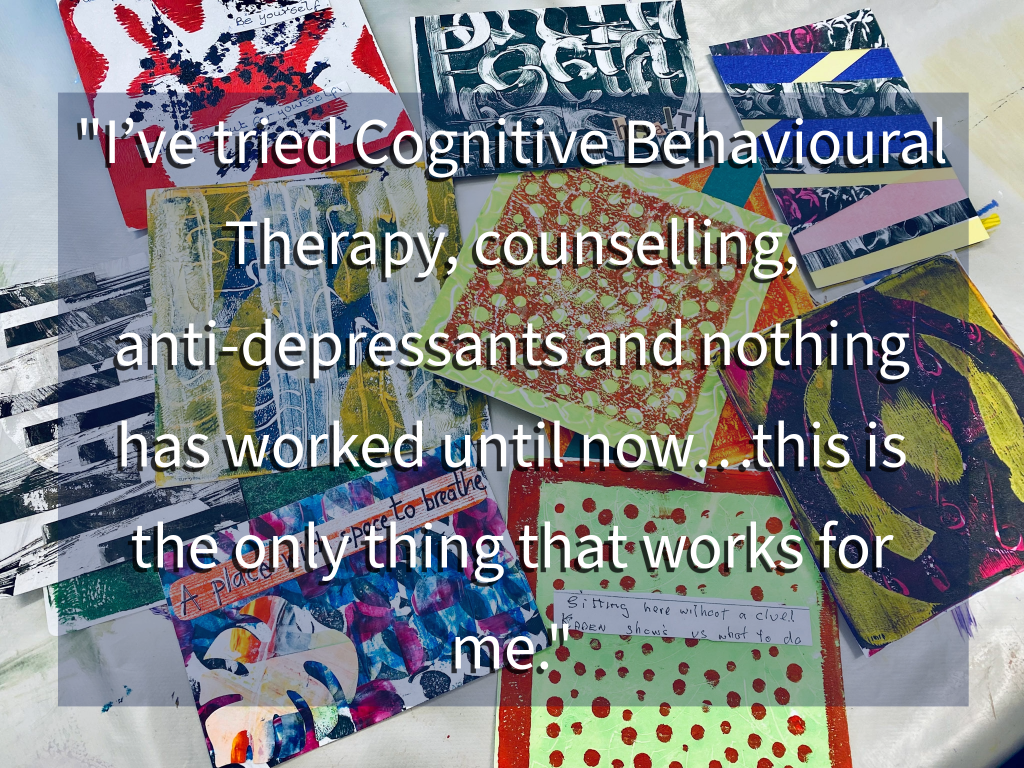
Development over time
Originally, Creative Directions started on a Wednesday in the Garden Room, but in 2021 this shifted to meeting in The Studio room on a Thursday. There was need for a bigger room and Studio was only available all day on a Thursday.
When Creative Directions began there were about 10 participants per session, but over time this grew. From 2017-2019 sessions were regularly seeing between 20 and 20 participants per session.
Initially, Creative Directions also included ‘Go and See’ visits around Doncaster. The participant coordinator would take people to see performances. This was largely CAST, though there were other occasional visits, such as to see live music. Participants also meet for a meal out around Christmas meal out.

During the pandemic sessions at the Point shut down, but Creative Directions continued online with activity packs delivered door to door. Post pandemic, participant numbers in the room were limited, but over time numbers have returned to nearer to pre-pandemic levels.
At various points Creative Directions has expanded to sessions out in the community in Thorne, Askern, and Edlington, as well as programmes with a music or movement specific focus. Currently the Edlington session on a Monday is the only session outside of the Point, as the other two where affected by the pandemic. Most recently darts has added an offering specifically for men.
The Community sessions are often smaller, and always artist led. They are attended by a solid group of regulars who also attend Creative Direction at the Point. Whereas the sessions at the Point seem more likely to attract those interested to try out the activity for the first time.
Impact
In its ten years, over 720 people have attended sessions, and a handful of long-standing participants have attended over three hundred sessions. Given that there have been about 1200 sessions in 10 years, means those individuals have attended 25% of all sessions!
In speaking with participants, I’ve heard about the ripple effects Creative Directions has had from people who have talked about building confidence, starting friendships, starting bands, starting hobbies, teaching others to read. Some people rely on it to stay well, for others it’s a chance to socialise and see friends.
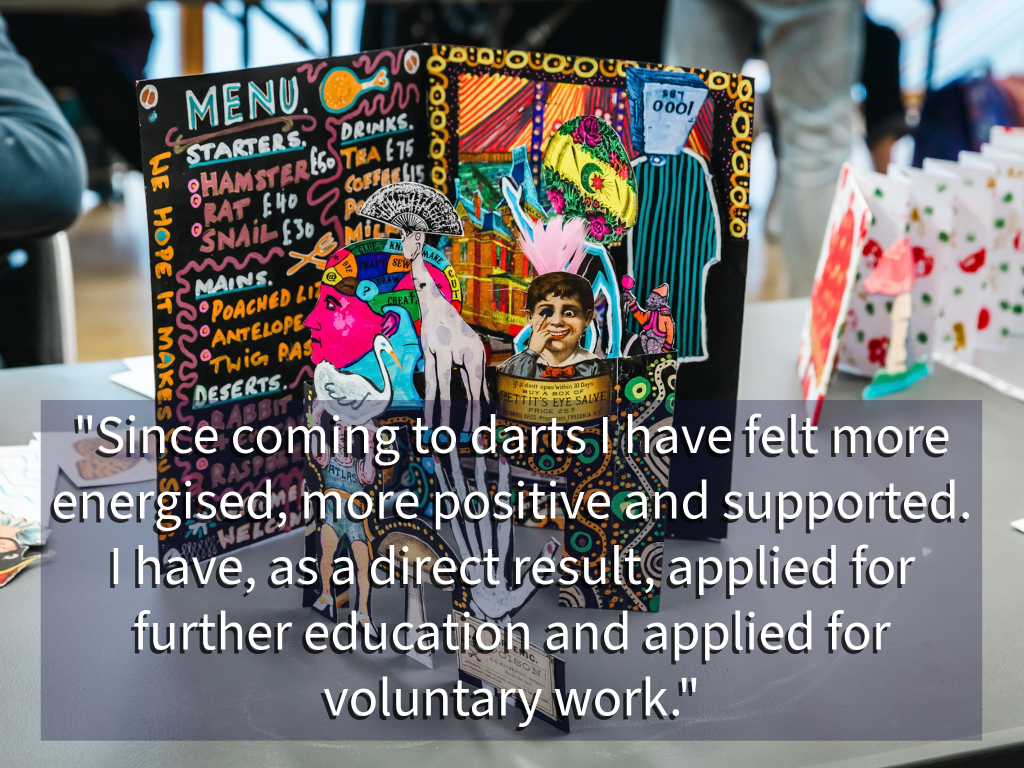
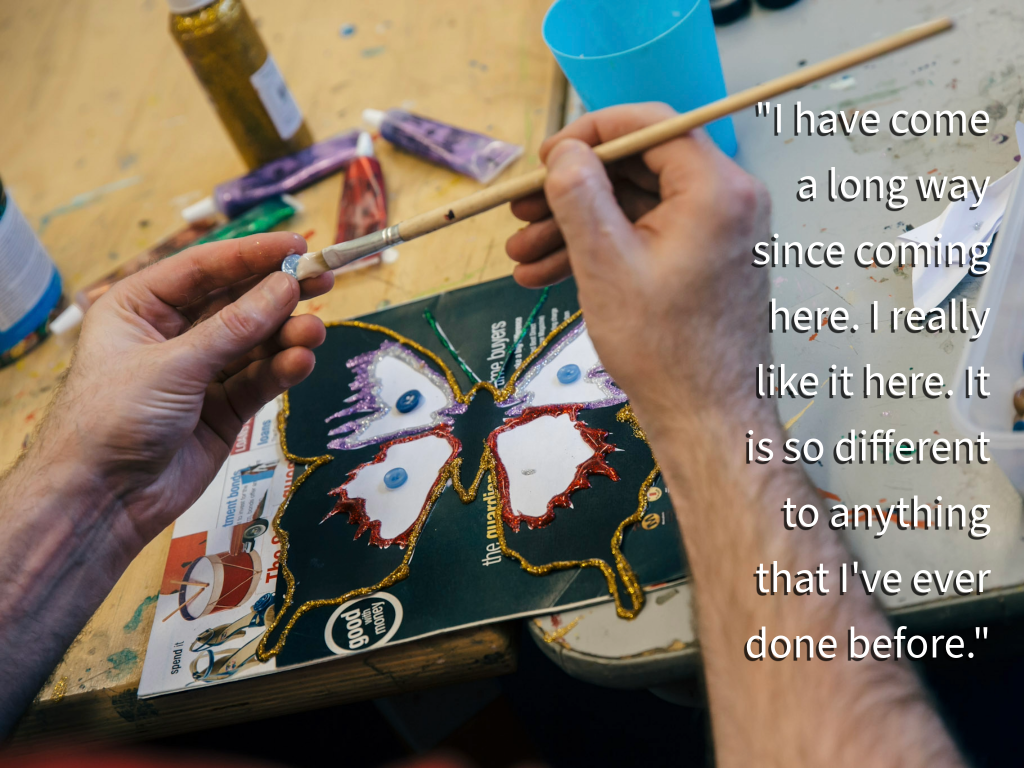
To close I’d love to pass the mic to the voices of participants telling you themselves about the impact Creative Directions has had for them.
- ‘I used to be a shut in. I was mute, so now to be able to come here and sing in front of people is a complete 180° change from 4 years ago.’
- ‘I can now see the gifts that I have been given, and I cherish them. We celebrate together through laughter and praise each other for every achievement no matter how small.’
- ‘I have come a long way since coming here. I really like it here. It is so different to anything that I’ve ever done before.’
- ‘We are all one big community.’
- Many of the participants have been coming here for years and have made firm friends: “Some of those women said they have been coming here for 18 years and I’ve only just found out about the place!’
- ‘It was good to come back in a volunteer capacity to the place where I used to be a participant.’
- ‘[Another participant] told me about this group. We got talking in the surgery waiting room when he mentioned that he came here. I thought I’d give it a go. It has been one of the best things that I have ever done.’
- ‘Creative Directions has helped grow my confidence, my assertiveness and I’ve got a whole new circle of friends now.’
- ‘It makes such a positive difference – it’s much needed and there should be more groups like this in Doncaster.’
- ‘Attending Creative Directions has put me on the track to recovering the confidence I used to have. It’s been an invaluable stepping stone to rebuilding my life.’
- ‘I’ve tried Cognitive Behavioural Therapy, counselling, anti-depressants and nothing has worked until now…this is the only thing that works for me.’
- ‘Since coming to darts I have felt more energised, more positive and supported. I have, as a direct result, applied for further education and applied for voluntary work.’
- ‘This group is saving the NHS thousands. It’s keeping people out of therapy.’
- ‘I am two years clean today and coming to The Point played such an important part in my recovery.’
- ‘I wrote that poem, tried it out and was trembling the whole way through. Then I read it out and there was this round of applause. It took me a moment to process it and why they were clapping – it was quite amazing.’
